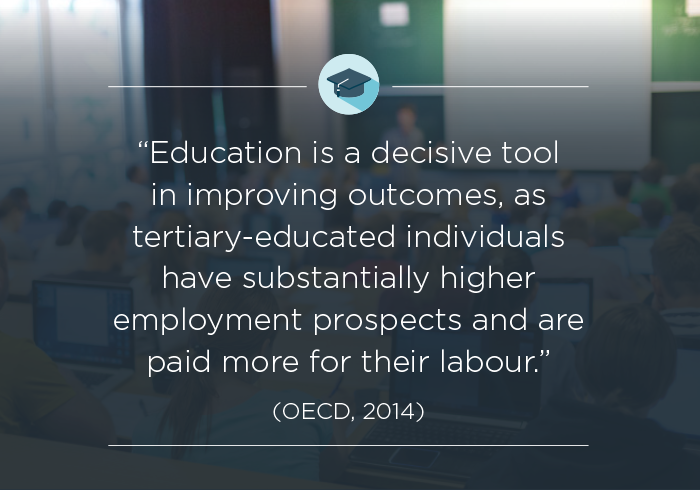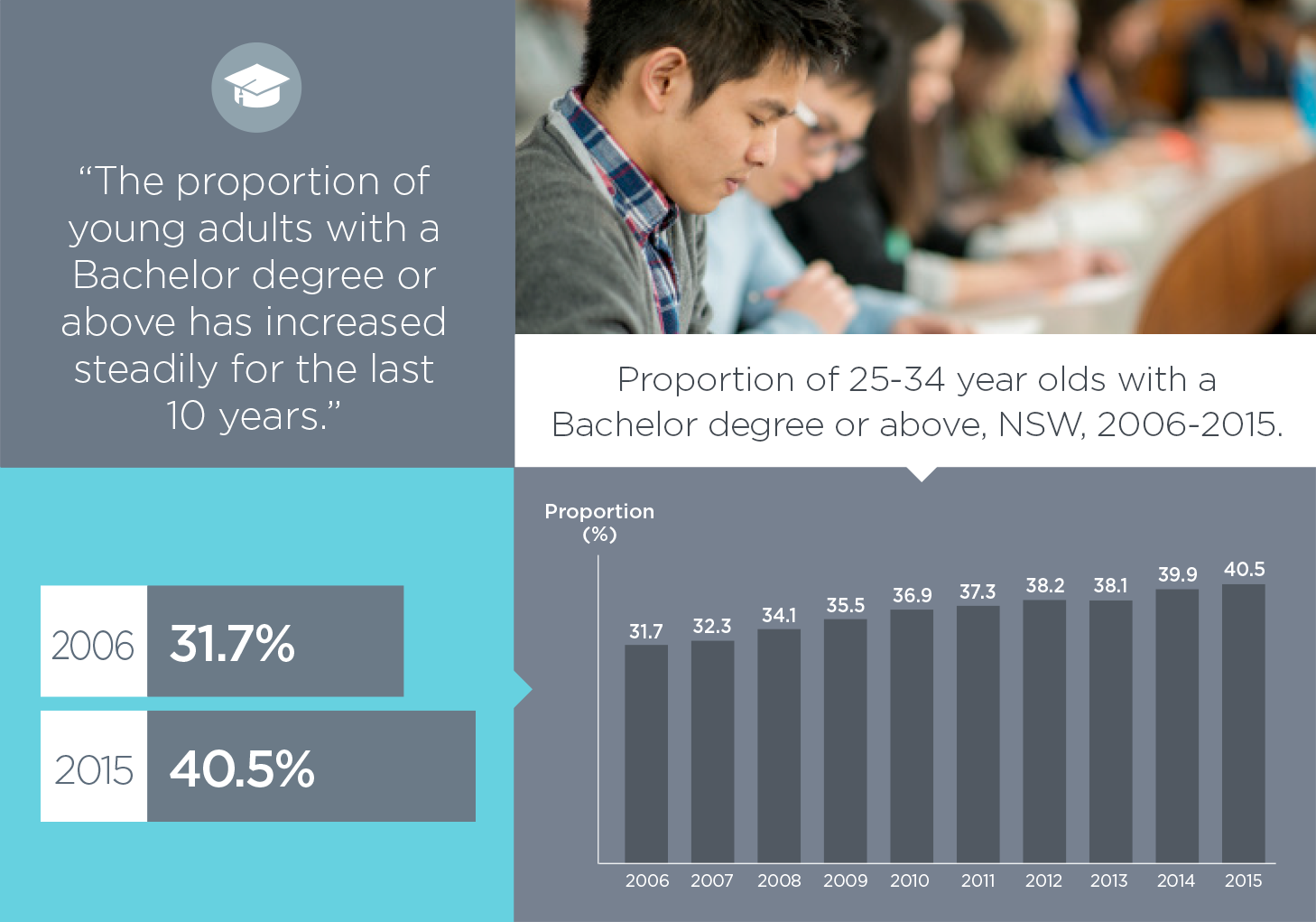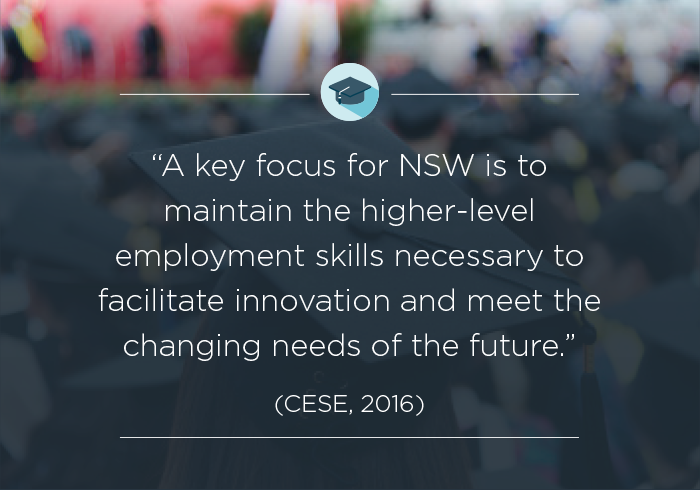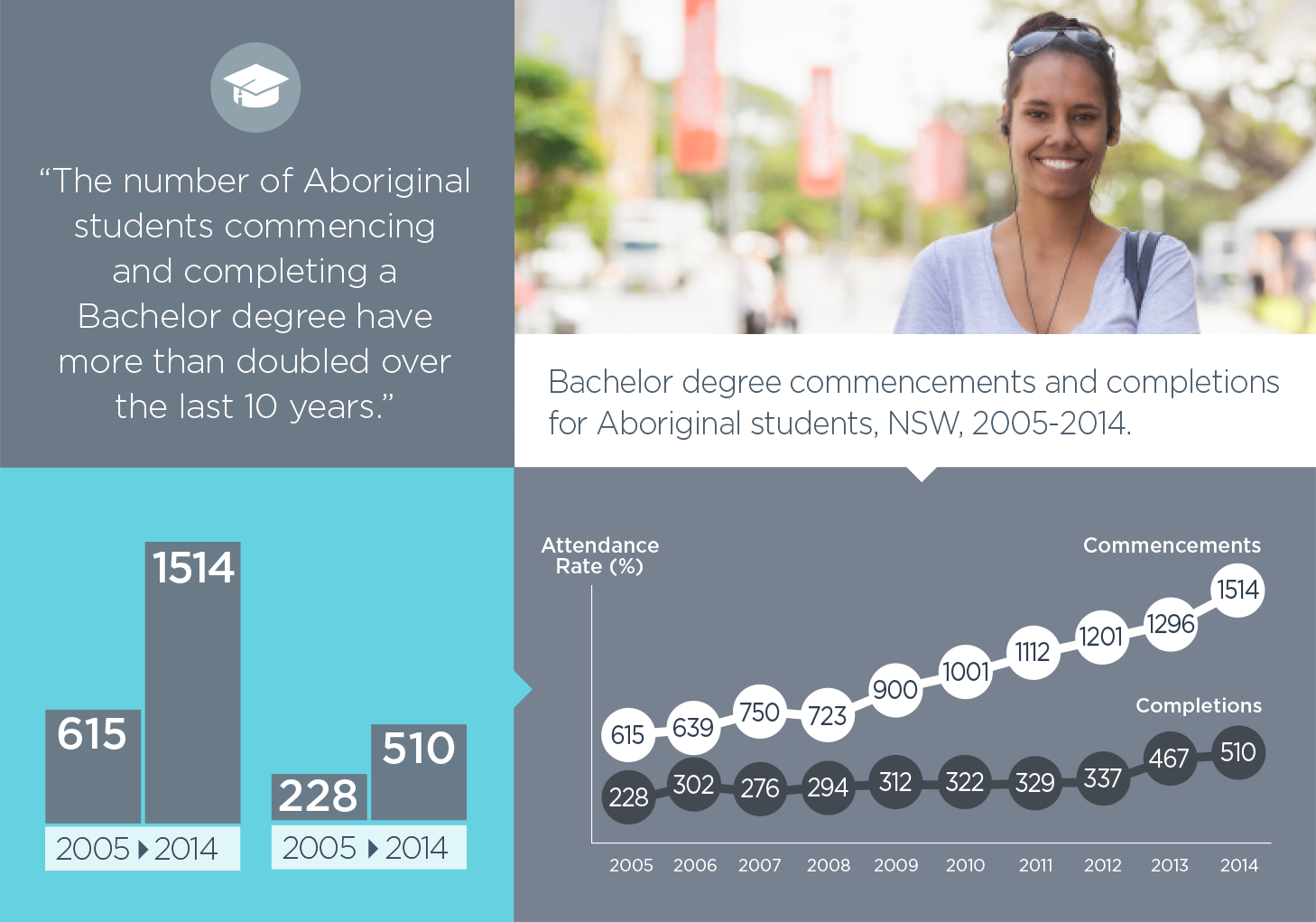

The Bachelor degree is the standard university qualification, usually taking three to four years of full-time study to complete. It qualifies individuals to undertake a range of professional work, and acts as a pathway for further postgraduate study.
Replacing the UAI in 2010, the ATAR provides a measure of a student's overall academic achievement in the HSC compared to that of other students, helping universities rank applicants for selection into courses.
The NSW higher education system is made up of ten public universities, TAFE providers and a number of other higher education providers. Monitoring the changing composition of the higher education sector assists with government funding and ongoing regulation.
Despite continued improvements in access to higher education, both Aboriginal and low socio economic status students remain substantially underrepresented in the NSW higher education sector.


It should be recognised that there has been an increasing propensity for people to identify as Aboriginal, especially as they grow older.





